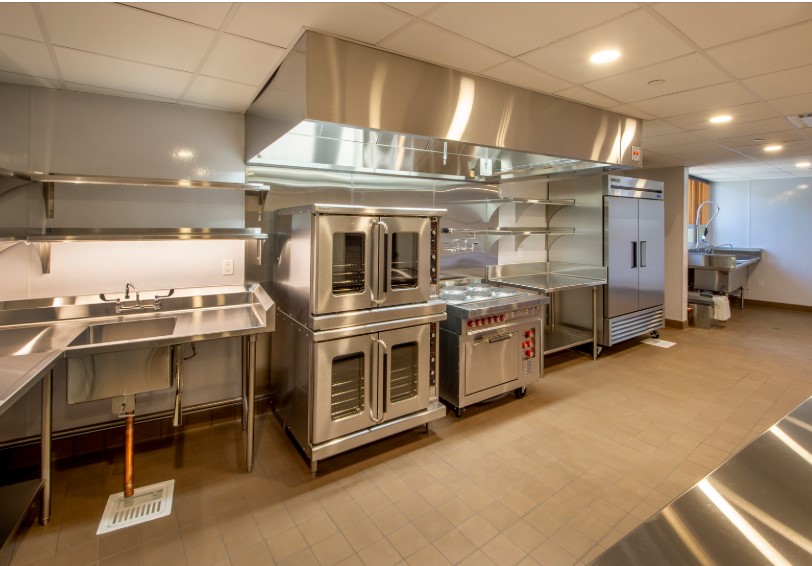A smooth running commercial kitchen relies on more than just top-notch chefs and high-quality ingredients. Behind the scenes, proper kitchen drain maintenance plays a pivotal role in ensuring the kitchen stays operational and free from costly and frustrating disruptions. One of the most important yet often overlooked components of a commercial kitchen’s plumbing system is the grease trap. Grease traps, if not properly maintained, can easily lead to clogs, backups, and even health code violations. In this post, we’ll dive into the signs of grease trap build-up, healthy kitchen habits, and the importance of a planned maintenance service to keep everything flowing smoothly.
Why Is Grease Trap Maintenance Crucial?
Grease traps are designed to intercept fats, oils, and grease (FOG) before they enter your kitchen’s main drainage system. When these substances cool down, they can solidify and create serious blockages that not only slow down your kitchen’s operations but could also result in unpleasant odors, slow drainage, and, in the worst cases, a full backup.
A clogged grease trap can also impact your kitchen’s efficiency, potentially resulting in messy spills and health code violations. Regular maintenance and servicing are essential to avoid these disruptions and ensure your grease trap is doing its job effectively.
Signs of Grease Trap Build-Up
How can you tell if your grease trap is due for maintenance or already in trouble? Here are the top signs of build-up to watch for:
1. Slow Drainage: If you notice that water is draining slower than usual from sinks, dishwashers, or floor drains, it could be a sign that your grease trap is becoming clogged with grease, oil, and food particles.
2. Unpleasant Odors: Foul smells emanating from your drains are a common sign of grease accumulation in the trap. As FOG accumulates, it can start to break down and create a rancid odor that can affect the overall atmosphere of your kitchen.
3. Water Backups: If your drains begin to back up or overflow, your grease trap may be severely clogged, requiring immediate attention.
4. Visible Grease: If you can see grease floating in or near your drains, it’s a clear indication that the grease trap isn’t effectively separating it from wastewater.
5. Frequent Blockages: If your kitchen experiences recurring clogs or drainage problems, it’s a sign that your grease trap is not being serviced or cleaned regularly.
Healthy Kitchen Habits for Grease Trap Maintenance
While professional maintenance is essential, there are several good habits you can adopt in the kitchen to reduce the build-up of grease and minimize the frequency of service calls.
1. Scrape Off Excess Grease: Before washing dishes, make sure to scrape off excess grease and food particles into a waste bin, not down the drain. This simple step can significantly reduce the amount of grease that ends up in your grease trap.
2. Use Grease Recycling Stations: Consider setting up a grease recycling station in your kitchen to collect used oil, which can be repurposed or disposed of safely. This practice can greatly reduce the amount of grease entering your drains.
3. Avoid Pouring Grease Down the Drain: As tempting as it may seem, never pour grease, oils, or fats down the drain. Even small amounts can accumulate and cause significant issues over time.
4. Regularly Inspect Drainage Systems: Conduct routine inspections of your kitchen’s plumbing and drainage systems. Look for signs of slow drainage or leaks that may indicate underlying issues with your grease trap.
Planned Maintenance Service: Keeping Your Grease Trap in Top Condition
The most effective way to prevent grease trap backups is by setting up a planned maintenance schedule with a trusted drain service provider, like Zoom Drain. Regularly scheduled maintenance allows professionals to monitor, clean, and service your grease trap, keeping it functioning at its best.
1. Routine Cleaning: Grease traps should be cleaned regularly, depending on the size of your kitchen and the volume of waste produced. Typically, commercial kitchens should have their grease traps cleaned every 1–3 months. During maintenance, a professional will pump out the accumulated grease and remove any debris that may be clogging the trap.
2. Grease Trap Inspection: Planned service includes inspecting the grease trap’s condition and making sure it’s properly functioning. The technician will check for any cracks, leaks, or areas that may need repairs, preventing more serious problems in the future.
3. Avoid Costly Emergency Repairs: By staying on top of maintenance, you’ll avoid costly emergency repairs, minimize downtime, and reduce the risk of a drain backup that could disrupt your operations for hours or even days.
4. Complying with Health Codes: Regular maintenance ensures your grease trap remains in compliance with local health codes. Failing to maintain your grease trap can result in fines, citations, or even a temporary shutdown.
Conclusion
Keeping your grease trap in top condition and performing regular maintenance is a key component of commercial kitchen drain maintenance. By adopting healthy kitchen habits and scheduling routine service, you can avoid clogs, slow drainage, foul odors, and costly backups. Your kitchen will operate more efficiently, and you’ll keep your staff and customers happy.
Don’t wait until the problem becomes severe—contact Zoom Drain today to set up a maintenance plan that fits your kitchen’s needs and prevents headaches down the line. Contact us for more information or to schedule your grease trap servicing today!


